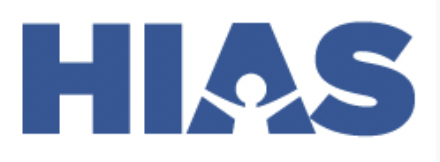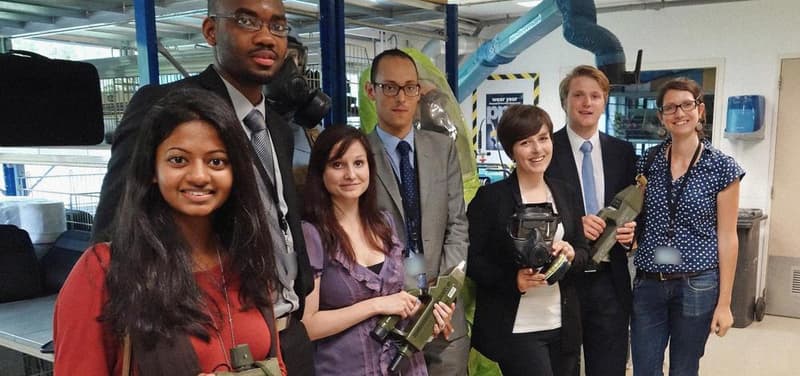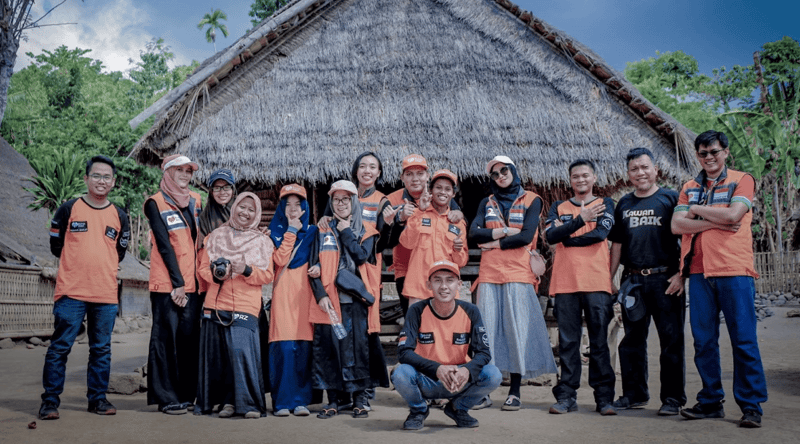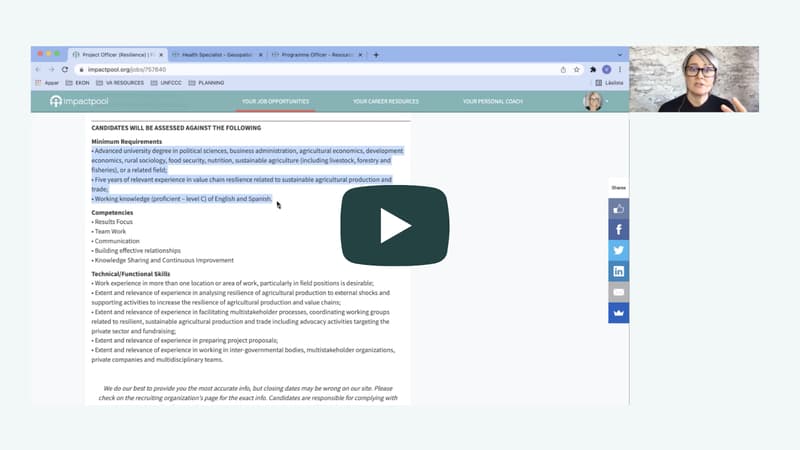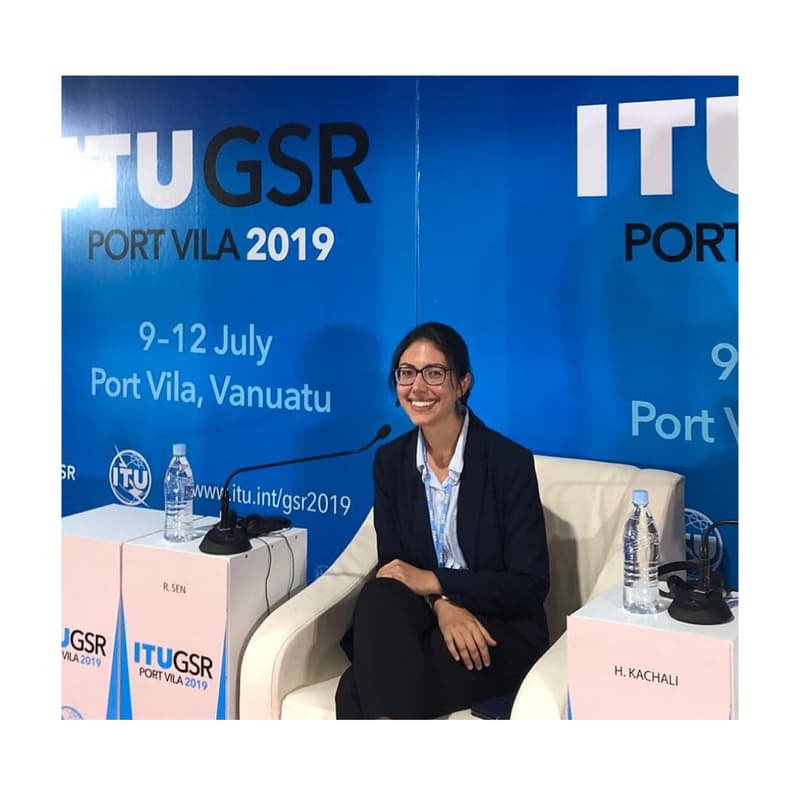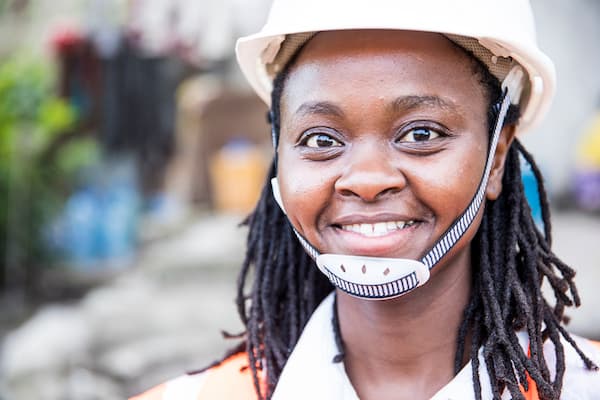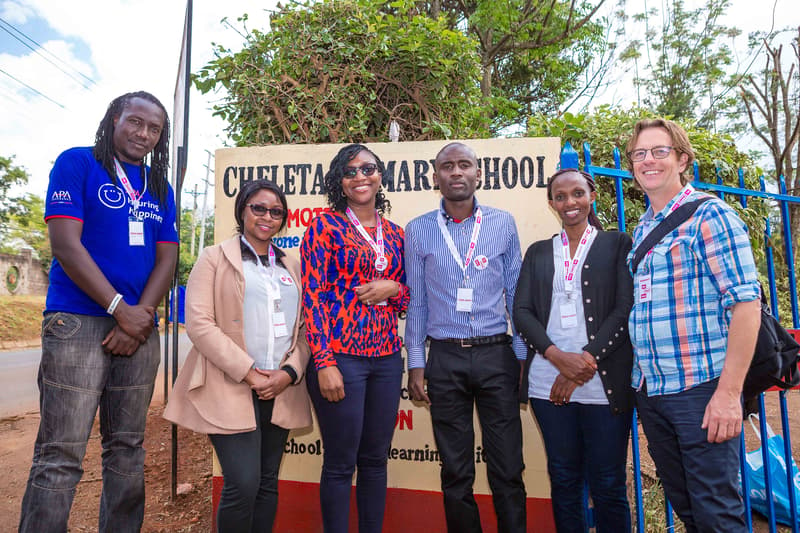Multi-Sector Needs Assessment in Dadaab, Kakuma and Kalobeyei Refugee Camps
Nairobi
- Organization: HIAS
- Location: Nairobi
- Grade: Level not specified - Level not specified
-
Occupational Groups:
- Development Cooperation and Sustainable Development Goals
- Refugee rights and well-being
- Closing Date:
BACKGROUND AND RATIONALE
CARE (Cooperative for Assistance & Relief Everywhere) International is a leading global humanitarian and development organization dedicated to fighting poverty and gender inequality in more than 95 countries. Founded in 1945 as a U.S.-based organization providing aid to European war victims, CARE now has more than 75 years of experience assisting and empowering the most vulnerable people and communities in their local context.
CARE works for a world without poverty, in which rights and dignities are guaranteed and in which all people could realize their human potential. CARE is sensitive to the realities of the cultures in which people live, work, and raise their families, and tailors its assistance programs to support vulnerable people as effectively as possible.
CARE International in Kenya (CIK) has been working in Kenya since 1968, and currently implements major programs in 20 out of the countrys 47 counties, reaching and assisting approximately 2 million people per year. CIKs programs align with national and county level priorities, focusing on refugee assistance, health, water and sanitation, financial inclusion, adaptation to climate change, disaster risk reduction (DRR), agricultural value chains as well as humanitarian and emergency response.
In all its interventions, CARE keeps gender equality and women voice at the center of all its core programming areas, which are as follows: Climate Justice, Humanitarian Actions, Agriculture & Market Systems, Water, Sanitation & Hygiene (WASH), Health, Equity & Rights (HER), and Womens Economic Justice (WEJ). CARE Kenyas approach is Kenyan-led, inclusive (in terms of promoting governance and key voices/advocacy efforts), market-based approaches, and works to strengthen existing institutions and systems.
CARE International in Kenya (CIK) is implementing projects in Dadaab refugee complex under the Refugee Assistance Program (RAP). CIK for over 20 years has been the lead partner of United Nations High Commission for Refugees (UNHCR) for Water, Sanitation and Hygiene in the three camps within Dadaab: Dagahaley, Ifo and Hagadera. In addition, CIK is currently implementing a 24-months (2021 2023) DG ECHO funded project in Dadaab, specifically in the 3 camps, focusing on WASH programming.
With the enactment of the Refugee bill into law in 2021, opening possibilities for refugees to live and work in Kenya, CARE Kenya is determined to build more diverse areas of refugees programming better suited to a rapidly changing world, including resilience and livelihoods building; creating a network of support for refugees using CAREs presence in the broader region through cross border programing; and advocating for refugees rights and wellbeing. These options are not mutually exclusive and will align with CAREs program focus areas that include gender transformative WASH, protection, livelihoods & resilience building, the work along the triple nexus for durable solutions and advocacy in humanitarian work. The changes are in line with CAREs Vision 2030 and will enable CARE International in Kenya to be more effective in working with partners and communities in the refugee setting to tackle the root causes that lead to the influx of refugees, help people to survive humanitarian crises and enhance inclusive and peaceful communities. CARE will be shifting more decision-making power to host and refugees communities and re-orientating it is teams to work in ways and on issues that are more tailored to their specific local contexts.
HIAS KENYA
HIAS protects and supports refugees to build new lives and reunite with family members in safety and freedom. HIAS Kenya integrates best practices based on international standards with a focus on community-based protection and empowerment. HIAS advocates and promotes durable solutions for refugees, including local integration, safe and voluntary repatriation, and third-country resettlement. HIAS operation in Kenya was established in 2002 with the mission to serve the most vulnerable refugees through our key signature programs: Gender and Gender Based Violence-G&GBV (which includes LGBTQII+), Legal Protection (Resettlement and Child protection Safe housing and Transit Centre departments), Mental Health and Psychosocial Support (MHPSS), and Economic Inclusion and localization?
Community-Based Mental Health and Psychosocial Support (CB-MHPSS)
Refugees and forcibly displaced people face adversity and extreme stressors, including losing loved ones, violence, and disruptions to daily life. HIAS community-based mental health programs train community members to recognize acute psychological and emotional distress in children and adults due to crisis and how to respond with empathy and respect. HIAS team of psychologists, social workers, and community outreach workers collaborate with refugees to implement culturally appropriate interventions, activities, and community-based support systems. HIAS Kenya supports the development and empowerment of community support and peer groups, facilitating opportunities for connection in a safe environment and ensuring access to mental health and psychosocial support by training on Psychological First Aid and Problem Management Plus and how to conduct psychoeducation sessions with communities.
Legal Protection
HIAS creates partnerships to protect the rights of refugees and promotes community-based protection by educating refugees and empowering them to speak up for their rights. Additionally, HIAS advocates for favorable policies and legislation for refugees. HIAS also engages in stakeholder coordination and capacity-building activities to advance refugee protection at the policy level. Partners include refugee community leaders, refugee organizations, civil society groups, government agencies, UNHCR, hospitals, schools, universities, lawyers, and other professionals. This coordination and capacity building allows HIAS to refer clients to needed services and training; build capacity in the sector on refugee rights; develop joint initiatives to advance policy change to increase refugee protection; and, as appropriate, support strategic litigation by other non-governmental organizations (NGOs) to advance refugee rights. As part of its legal protection work, HIAS also partners with local NGOs, resettlement country governments, and UNHCR to ensure the integrity of the refugee resettlement system and to advocate and promote durable solutions such as local integration, safe and voluntary repatriation, and resettlement.
Safe House and Transit Center
HIAS maintains a safe house for at-risk urban refugees with heightened security concerns. Residents are provided with meals, non-food items, and access to appropriate medical, legal, and psychosocial assistance. HIAS also offers temporary accommodation to new arrivals and refugees with heightened security concerns at the transit center, pending travel to the camps or integration into the community.
Child Protection
HIAS is responsible for the case management of unaccompanied and separated children (UASC) registered with UNHCR in Nairobi. We coordinate with other partners to identify children at risk, either UASC or children within family units. HIAS also convenes monthly Best Interest Determination panel meetings.
Gender & Gender-Based Violence (G&GBV) Prevention and Response
Women, girls, and LGBTQI individuals are disproportionately affected by forced displacement. The needs and the voices of survivors drive HIAS GBV services. Our GBV programming helps forcibly displaced women, girls, and LGBTQI individuals pursue their potential, free from violence and gender-related oppression. HIAS Gender and GBV program in Kenya focuses on building solid and responsive pathways for survivors to access medical, mental health, and legal services. The program works to break the gendered cycle of vulnerability and violence for women and girls by strengthening community response and protection units, developing of prevention models that seek to transform men and boys into allies, and empowering women and girls. Working closely with the local community, HIAS uses an array of strategic interventions to enhance the quality of care for survivors of GBV, including providing financial assistance, mental health and psychosocial counseling, therapy groups, and accessible and comprehensive health services. HIAS coordinates the GBV working group that is co-chaired by UNHCR, a collaboration that includes the collection of data and data management of GBV cases.
Economic Inclusion
HIAS Kenya has created programs that promote resilience using proven sustainable models, such as the scalable social and economic support program, and household economic strengthening models, such as the Graduation Model Approach, which provides cash assistance, seed capital, access to savings, and vocational and technical training (TVETs), and intensive coaching. HIAS Kenya also works on capacity building of community-based organizations; savings matches for entrepreneur women and girls; promotion of savings groups in refugee communities; and creating safe community spaces for peer mentorship and networking for girls.
Localization
HIAS Kenya has experience in implementing community-based protection activities for refugee and host communities. This experience is rooted in building equal partnerships with local and national organizations to protect and support refugees in building new lives in the country of asylum. This is done through localization practices. HIAS conceives localization as a process where the capacities and comparative advantages that HIAS as an international non-governmental organization and local actors bring to humanitarian response is leveraged in a synergistic and mutually supportive manner to strengthen the delivery of humanitarian assistance to refugees. Hence, HIAS has undertaken activities to strengthen the capacity of these local organizations to respond to the needs of refugees and has supported inclusion and meaningful participation of refugees in humanitarian programming.
In view of the above CARE and HIAS Kenya intends to conduct a multi sector needs assessment to propose intervention modalities in line with the needs, realities and access context, preferences and capacities of the refugees and the host communities in Dadaab, Kakuma and Kalobeyei.
During the needs analysis phase, particular attention will be paid to the protection and gender dimensions, which will be integrated in a cross-cutting manner (analyzed across all sectors) in the intervention strategy and implementation methods. Equally, the needs analysis will also be particularly attentive to the environmental aspects and the impact of the foreseen activities on the environment.
ASSESSMENT OBJECTIVES
The primary objective of this assessment exercise is to identify, map and analyze the overall humanitarian needs in Kenyas refugee camps. Secondly, it is intended to provide an analytical insight into where different needs lie and to what extent, so that relevant program areas of CARE and HIAS Kenya can add value, prioritize, plan and respond.
The specific objectives are:
- To provide an empirical overview of the status and developments of humanitarian needs across Kenyas refugee camps, especially regarding the accessibility to basic services.
- To enable evidence-based engagement with the donors and partners in the humanitarian sector.
- To feed and strengthen advocacy efforts.
- To support better planning and implementation of emergency and longer-term programs by allocating scarce resources based on needs and community capacity.
- To establish the suitable mechanisms for Accountability to Affected Populations including Feedback, Complaints and Response Mechanisms for vulnerable refugees, including LGBTQ+ persons, and the host community in Kakuma and Dadaab and Kalobeyei.
- To screen the environmental risks linked to intended project and to assess the environmental impact of humanitarian operations planned.
The methodology used to carry the needs assessment will be rooted in a mixed methodology, combining the collection of both qualitative and quantitative data through a cross-sectional study design. The study aims to target 200 respondents (140 HH & 40 FGDS and 10 KII) on household quantitative surveys, Key Informant Interviews targeting local humanitarian Aid organizations operating in Dadaab and Kakuma and Kalobeyei, government departments and UNHCR and Focus Group Discussions on camps targeted for the exercises. The sampling frame will be made up of People affected by displacement i.e., IDPs, Host Communities, Refugees, Asylum Seekers, and Returnees. To assess the environmental risks and impacts, the NEAT+ tool Rapid and simple project-level environmental screening for humanitarian operations will be used.
ETHICAL CONSIDERATIONS
All questionnaires and interviews will open with a statement aimed at obtaining the consent of the interviewee(s). Potential respondents will be briefed about the purpose of the survey, confidentiality, and anonymity and that it is 100% voluntary. The interviewer will then expressly seek their consent to participate in the survey. Respondents who decline to participate will respectfully be left out.
Consent will also be sought to share information gathered from the needs assessment with partners.
KEY PRIORITIES /AREAS OF INTEREST FOR DATA COLLECTION
The assessment will be centered around the core humanitarian competencies of CARE and HIAS to maintain relevance with CAREs and HIAS overall program policies. Below are key priorities for each of the competencies based on which data is to be collected.
The multisectoral needs assessment (MSA) should include data on:
- the context of intervention and priority needs, preferences and capacities of people affected by the crisis.
- the risks and vulnerabilities to which the population is exposed, with a particular attention given to the environmental ones; and
- analysis of responses.
Overall, all data collected, and the needs identified should be analyzed according to gender, age, disability, and household status (returnees, displaced persons, returnees, hosts, etc.) and should include data on the following elements:
- Assess the humanitarian situation in the targeted localities, confirm the presence of displaced persons (Refugees, Asylum seekers, IDPs/returnees, returnees), the situation of host families, and identify the different vulnerabilities suffered by the different categories of targeted populations, with their impacts on the different groups disaggregated by sex, gender, age and disability;
- Assess the security situation (forced displacement, inter-communal conflicts, attacks by armed groups) as well as accessibility to areas of displacement and return, with the impact on different groups disaggregated by gender, age and disability.
- Assess potential and observed protection problems in the targeted health areas, disaggregating the impact on different gender and age groups (identification of problems and victims), with a particular focus on the specific situation/vulnerability of women and girls.
- Assess the environmental risks and the potential impact that humanitarian operations could have on the target areas, with a specific focus on WASH activities. and
- The sectors to be assessed under this MSA are as follows:
- Food security: main food crops, proportion of food produced and obtained on local markets, proportion of food obtained through humanitarian distributions, size of cultivated plots, estimation of harvested quantities (no. of months of reserve) and of food stocks, mitigation measures and survival strategies adopted by the most vulnerable groups.
- Nutrition: access to health and nutrition services for vulnerable groups (children under five, pregnant/lactating women, elderly, people with disabilities and/or special needs).
- Livelihoods: access to land and water for agricultural production, ownership of productive assets (means of production for agriculture (tools and seeds), livestock, processing, transport, etc.), main sources of income (in normal times) and alternative sources of income (other than agriculture), access to employment (most frequent activities, evolution of supply/demand on the labor market, evolution of the price of daily work), evolution of labor migration, evolution of the level of indebtedness;
- WASH: access to safe water in quantity and quality (sources of supply, drawing, transport, storage, use/consumption, food preparation, food and water conservation, hygiene, etc.)
- Protection and gender (especially Child Protection and SGBV): main threats and violations of fundamental rights, access to essential protection services, endogenous measures to prevent conflicts and violence against people, existing community services and possible referrals; people most affected by the crisis, specific needs of each category of people (women, men, girls, boys, etc.), socio-economic interaction between different categories of people within the household and in the community, rates and instances of SGBV and existing care services; and
- Health including Mental Health and Psychosocial Support: access to essential and emergency health services, capacity of health care providers, status and gaps in health care facilities, response to community and infectious diseases/epidemics, status and services for child and maternal health, and sexual and reproductive health.
HIAS and CAREs Responsibilities
-
- Adherence to the contract terms and conditions
- Oversight of the exercise
- Develop jointly with the service provider assessment questions and refine indicators.
- Work with the service provider on the preparation of tools, selection of sampling and data gathering methodologies.
- Sign-off technical plan/proposal
- Sign-off tools before deployed for fieldwork.
- Participate in validation workshop to give feedback and endorse assessment findings.
- Assign a focal point that regularly liaises with the service provider.
Expected Deliverables
- Technical Proposal including work plan.
- Inception report
- Assessment indicators
- Desk review report including the sources used.
- Data collection tools
- Preliminary findings for initial review
- Validation Workshop
- Raw data for storage with CARE Kenya and HIAS; including Maps of visited location, Mapping of other stakeholders/actors in the assessed locations; List of stakeholders (NGO representatives/staff, authorities etc.) contacted.
-
Final report issued and provided in the result of which;
- CARE and HIAS Kenya team can identify community needs and priorities in targeted locations to be used as a basis for immediate response programs and strategy revision.
- CARE and HIAS Kenya obtains first-hand representative information on IDPs, Host Communities, Refugees, Asylum Seekers, and Returnees in targeted locations, which can be used for programming and advocacy efforts.
10. PowerPoint presentation: Describing the assessment process, results, and recommendations. The findings will be presented in a validation meeting with key staff and stakeholders.
11. Summary Report (3-5 pages).
The deliverables will be approved by the CARE and HIAS Country Offices PQLA Manager and Country Directors. will cover the costs of consultancy fee, field work and other logistics associated with the assignment. CARE Kenya will provide useful project documents that will inform this exercise.
DURATION OF WORK
The work is expected to be completed in 30 days -starting on 20th November 2023. The exact timing will depend on the final agreement with CARE and HIAS Kenya.
QUALIFICATIONS
- The consultancy firm/individual must be registered with all relevant authorities and specializes in conducting qualitative and quantitative research.
- The consultancy firm/individual must have more than 7 years experience of conducting a variety of surveys in Kenya.
- A track record conducting needs assessment within the displacement context is highly desirable.
- The consultancy firm/individual must demonstrate ability to lead experienced teams to conduct face-to-face interviews in Kenya.
- The consultancy firm/individual has impeccable record of confidentiality and sensitivity and is able and willing to handle sensitive information, ensuring anonymity of respondents whilst safeguarding access to the raw data for partners stated in this Terms of Reference.
- The consultancy firm/individual can demonstrate sound financial accountability.
- The consultancy firm/individual can use to a high-level data entry and data analyzing software such as CS Pro and SPSS, and can produce visual graphics from data, such as charts produced in Microsoft Excel. Experience in graphic design will be an advantage but is not required.
- The consultancy firm/individual has a good track record of working with international organizations such as international NGOs or the UN in Kenya.
SCHEDULE
- Inception Meeting with CARE and HIAS Kenya
- Inception report
- Desk review of relevant project documents
- Development, pre-testing, and validation of the survey questionnaire
- Finalization of assessment tools including scripting of questions on ODK/Kobo tools, if applicable.
- Data collection
- Data analysis and preparation of the draft report
- Validation of draft report
- Final Report and PowerPoint presentation
APPLICATION PROCEDURES AND REQUIREMENTS
The consulting firm/individual interested are expected to provide following documentation:
- A cover letter introducing the consultant. In the case of a firm, the cover letter should introduce the team composition and specifying the role to be played by each team member.
- A technical proposal of not more than 10 pages outlining how to execute the task with a clear framework, methodology and timelines. Proposed methodology should demonstrate a clear understanding of the ToR (sampling framework, data collection strategy/methods)
- Resume of the consultant, or each team member for firm
- Evidence of experience conducting similar assignments
- Proposed budget indicating consultancy fee, costs of enumerators/ data collection, and all other auxiliary costs in Kes.
SUBMISSION
Please send your application using the following link: MultiSector Needs Assessment in Dadaab Kakuma and Kayobeyei Refugee Camps - Careers At HIAS (hrmdirect.com) on or before 5pm on 14th November 2023. Applications not bearing the requirements highlighted in this advert will not be considered.
Note: Only shortlisted candidates will be contacted. Late applications will not be considered.
HRTK is an equal opportunity employer, does not charge candidates for recruitment and dissociates itself from any entity defrauding candidates.
